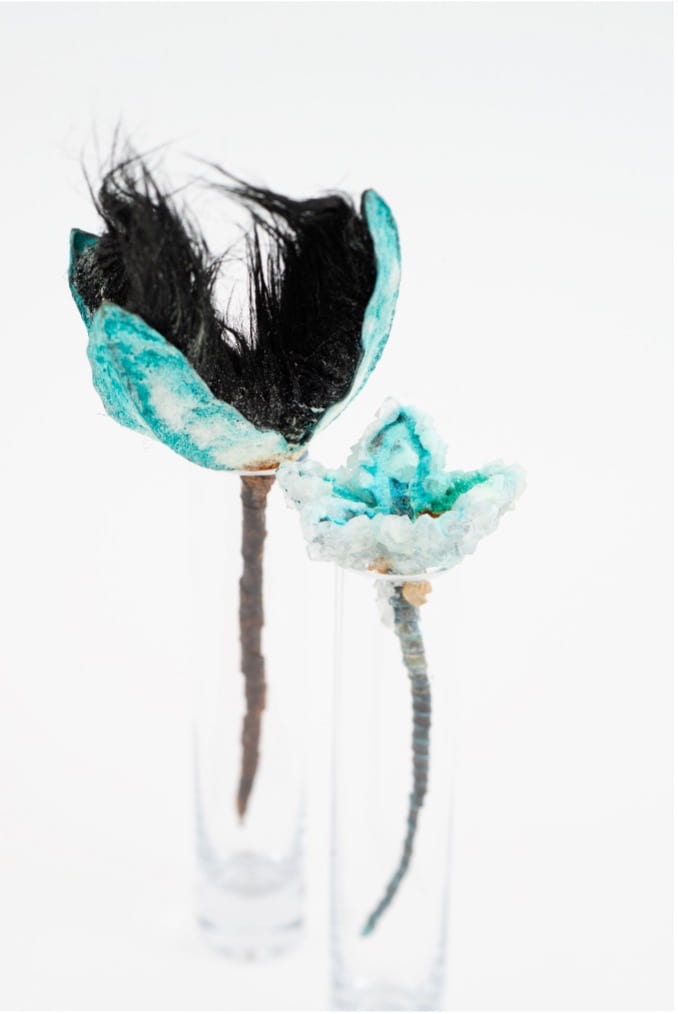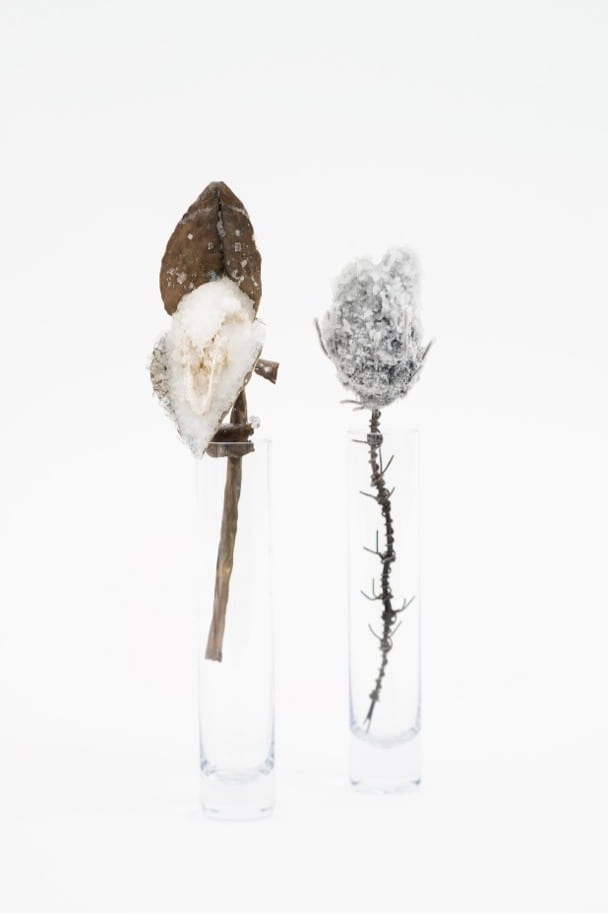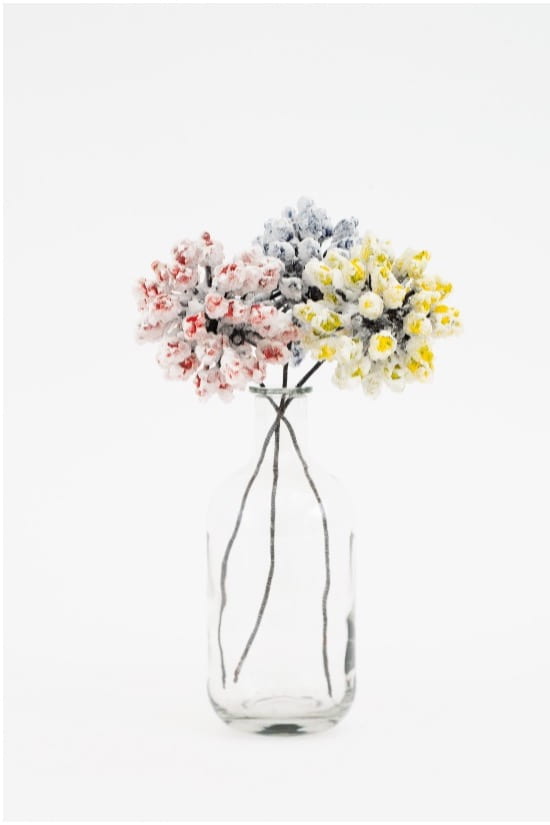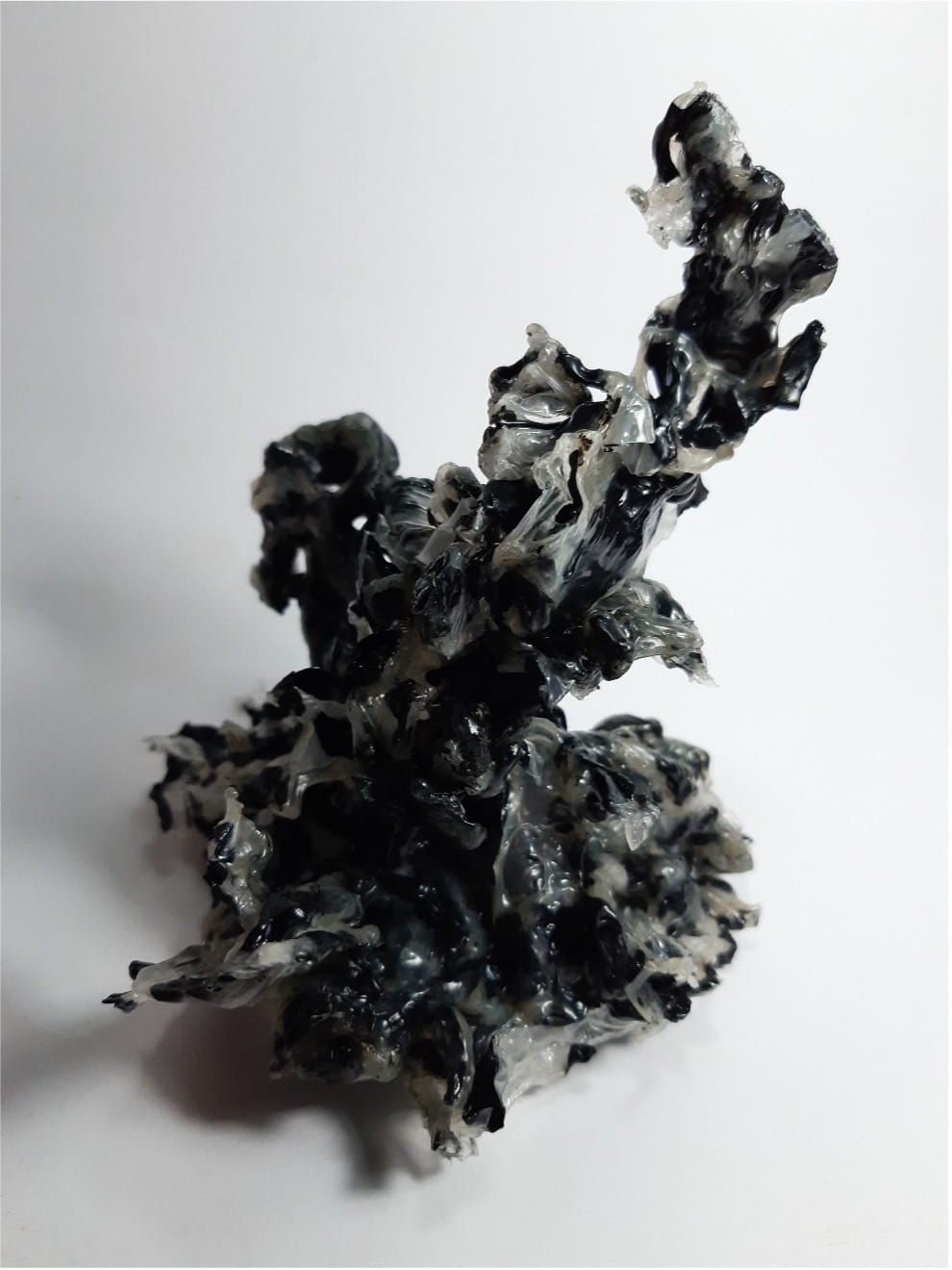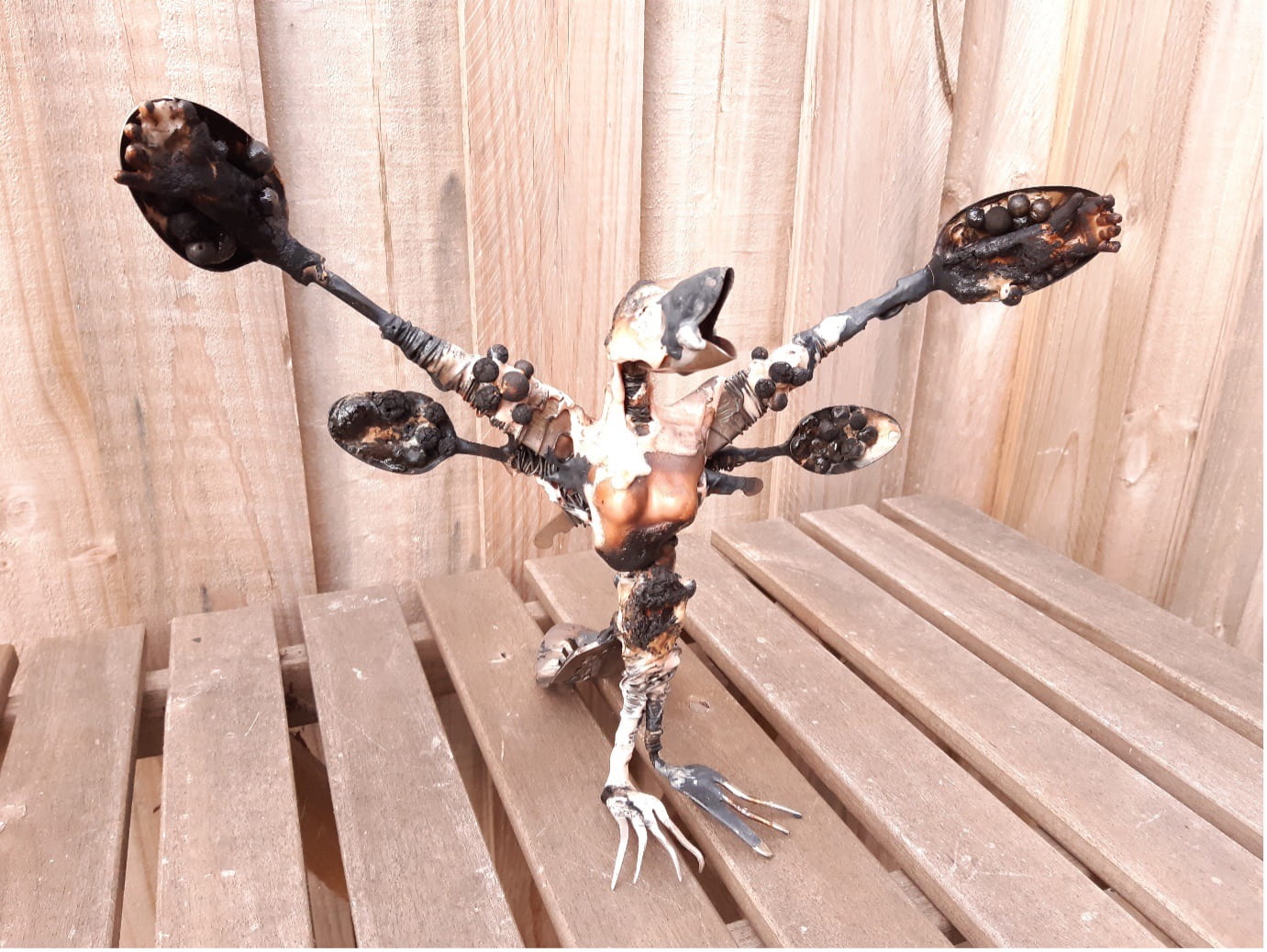Essay by Andrew Poduska as part of Contextualising Practice course.
The ways in which artists relate to materials and how they are used can offer a great insight into their personal history and the inner sanctum of their mind. Through this essay I will be dissecting my own childhood to analyse how it has shaped my predispositions and connections to specific materials, processes, and theoretical ideas that are utilised throughout my practice. These will be explored through the notion of the unconscious, the influence of personal history and by referencing various artists and theorists from a range of fields.
The origins of my artistic tastes evolved from my childhood property in Castella. We lived in the sticks, on a mountain somewhere between civilisations far reach and the thick of the forest. Here trees outnumbered people and the beasts ruled the brush. My father was in a constant battle with our house, the struggle of completing it by hand and life’s obligations stretched him thin, my mother was a hoarder of dolls, toys, and collectables, she filled its unfinished innards with mass produced novelty until it was fat.
This forever changing and evolving environment was where I cut my teeth artistically. The access to building materials and readymade objects allowed me to play Doctor Frankenstein with my surroundings. Here is where plastic doll parts met galvanised wire and nails, putty and caulk merged with soft toys, paint ran thick and sculpturally over sacks of forgotten sheep’s wool that hung from the rafters, and the foraged motors from broken remote-control cars animated the bodies of my creations.
This is where I also learnt about decay. The forest is a sopping wet terrain in the colder months and a dry tinderbox when it is hot. All seasons played havoc with anything we brought to the land, it warped wood, rusted metal, mucked the tended ground, and downed treasured animals. Here is where the elements taught me about give and take, an alchemic thinking that showed me that all things are in constant flux, a perpetual dance between decomposition and reconstitution of which we are all privy.
Later in my adolescence I had discovered the book, A Short History of Nearly Everything by Bill Bryson, which helped me contextualise these connections (2003). Bryson begins with a congratulations of even existing – an accomplishment that he dissects down to the very particles that form your mortal structure. This is further broken down into the nature of particles and how they can dance between objects to build new forms, a similar observation of mine within the decaying materials of home where matter routinely transcended forms (Bryson 2003). It provided me with the starting point of how I would engage with materials physically throughout my creative journey, holding them to an equal degree and thus allowing everything to be interchangeable.
The book also led me to the concept of string theory and its origins, the double slit experiment which was first performed in 1909 and reconducted countless times by some of the greatest scientific contemporary minds (Bryson 2003). The documentary, What the Bleep Do We Know (2004) explains how this proved that particles move differently depending on if they are being watched or not, observation locks them in to a time and space, looking away allows them to move freely in waves. This mind-blowing concept allowed me to connect mentally with objects by opening the idea of both chaos and order existing together within a material, and that the creator and audience play an equal part in its existence and behaviour.
From these beginnings I had developed a fondness for gritty, dirty, nature and its interactions with manmade objects. Although these influences come from a place of personal childhood trauma, I was still drawn to them. Doctor of Philosophy and clinical councillor Eleonora Joensuu refers to this as the push and pull effect. Disgust is the darkest of all the senses as it comes from a highly personal, visceral place. We are repelled by things we find disgusting, yet we are also fascinated by those same qualities (Lane & Joensuu 2018). Jean Piaget, a psychologist who pioneered the theory of cognition and human intelligence development, expands on this with his research on the method of how children acquire knowledge. He concluded that the processes that are related to logic, such as time and space, language, and social relationships, are developed in stages through interacting with the world (Piaget & Bärbel 2000). The process of sensory experiences is what informs us and creates a library of knowledge based on these interactions with the physical realm. Therefore, I am naturally inclined to investigate these traumatic elements through my art as they are a part of my formative years.
This theory became clearer to me during the lecture by Simon Crosbie entitled Untitled: pre-sense and the psych (2022) in which he discusses his own childhood trauma and how it unconsciously presents itself within his work. He found that the significance of a piece or material is not always apparent during the creation process. Focusing on methodology, rather than intent, is the key to revealing repressed meanings and feelings. This is also expressed by painter Marion Milner when she discusses her practice. She describes the way that she works with materials as an intimate relationship. Her process helps identify familiarity within the unfamiliar, and that this personal history she shares with materials guide her instinctively while allowing the discriminating ego to temporarily fall away (Townsend 2019). This unconscious relationship is only formed by trusting in the material and allowing it full control.
Building on this idea of letting go, I applied the concept of automatic writing to my creative process which developed into a research series last semester entitled Automatic Growth. This was an investigation into cultivating borax crystals, salt patinas, and rust over various manmade and organic objects like a skin. A theory championed by the Surrealist movement, it was developed through unconscious thought and dreamscapes by utilising meditation, drugs, sleep deprivation, hypnosis, and any other means of dulling conscious actions while creating (Richardson & Fijalkowski 2016). This practice continues to influence my current work and has become an intracule part of my process by allowing the material to dictate the final form through its own natural inclinations (Conley 2011).
These designs were constructed by subconsciously utilising found objects that I instinctively responded to and allowing the unbridled growth of chemical reactions to engulf the surface. Patricia Townsend explores this notion using the term pre-sense or more colloquially, the hunch (2019). This refers to the feeling that an artist gets during the creative process when an unconscious inkling guides them instinctively towards materials, subjects, or a process that has no known outcome. She notes that an artist is influenced by personal background, training, previous works, and cultural climate, and that their practice is a life-long journey (Townsend 2019). This subconscious exploration therefor manifests itself physically into our world through art, and our life experiences is what gives it shape and meaning. Carl Jung adds to this by characterising this personal history with certain materials as a type of empathy that is shared with the inanimate. The reaction to a material is a learnt experience driven by interactions during childhood development, a culmination of interactive play which is informed by the senses (Hardman 2021). This sentiment of playfulness was adopted by the Surrealist movement and included within their manifesto, a principle that would run parallel with their concepts of engaging the unconscious mind through games, and melds with my own creative sensibilities through instinctive exploration (Waldberg 1971).
Utilising this sense of play and following the unconscious exploration I had developed through my series of flowers, I wanted to create a piece employing a singular material being treated to a repetitious technique that required little thought. A transparent umbrella covered with black polka dots was selected due to its neutral structure and easy malleability. Within this process I focused on the interaction rather than the outcome to see how I may connect with the material. My methods were inspired by the installation works of Olafur Eliasson, who’s interactive landscapes create a circuit with the audience which grows stronger the more they engage with the synthetic environment (Jewitt 2012). This most notably highlighted in his 2003 installation The Weather Project, in which he created an artificial sun and atmosphere within the Tate in London that the audience could walk around (Wallace 2011). Although his outcome differs from my smaller scale works, I wanted to apply this concept of interaction to the material and methods I utilise.
Starting with the flat plastic cover, I cut the sheet into nine pieces of roughly the same dimensions. These pieces were rearranged from the original setting and melted together with a mini torch along the edges which disrupted the even spacing of the polka dots. This new piece was divided up again, never following the previous cuts, and reassembled in a new order. The act of repetition in this process allowed me to enter a trance state which let my body work without constructive thought and aided me in transforming the flat plane into a freestanding organic structure as shown in figure 4.
Within the process I was able to connect with the plastic and let go of my control which allowed the material to take over and react to me. Tibor S. Balint, the Principal Human Centred Designer at NASA wrote about this connection by categorising the creator and audience as observers. He suggests that within this connection with the material, the longer the creative actions take place, the stronger the bond becomes, but also the more unpredictable the result may be (Balint 2015). This is evident within this piece as there was no self-prescribed end point or time limit, it ended when it was meant to end. If this continued it may have hit the point of self-destruction, which suggest that instinct plays a part to prevent total chaos.
Following this investigation, I revisited the ideas from my series Animal + Mineral + Vegetable and applied what I had learnt from the chemical skins to my newly acquired knowledge of melting plastic. As an untitled work in progress depicted in figure 5, it was part of a found object project that incorporated a collection of randomly selected items that could be remade. The result of which was a bird formed of silverware and bound in wire. The design came organically as large serving spoons were arbitrarily bent and set together until something familiar appeared. This form was then coated in melted plastic dolls to create a skin which gave the bird a humanistic quality, the familiarity of the figure within the erroneous setting makes for an unnerving feeling. Surrealist Meret Oppenheim describes a similar reaction between materials when referencing her fur covered works over ceramics. The contrast of fur as a warm-blooded living organism covering cold dead bases makes for an unnatural coupling (Mansén 2014). This state of play between contrasting materials is also a returning feature of my work, the act of growing skins over metal skeletons helps in elevating the qualities of both forms. The ugliness of melted plastic is made even more striking compared to the cold smooth surface of metallic cutlery.
The use of found objects in this project again unintentionally links back to my childhood. The silverware and the dolls used were given to me after the death of my mother in 2020, just a part of her vast collection of treasures she horded that had been forgotten in storage. These objects were relics saved from the fires of the Black Saturday bushfires which razed my childhood home in 2009, and perhaps subconsciously the act of melting and burning these objects reflected this personal history. Oppenheim often refers to the idea of things, the concept of if all universal culture was destroyed, that the ideas that they represented would always remain (Powers 2001). Even though that place has been long since erased, and my mother is lost, the ideas and memories are still present within me and will always be a part of my artistic practice, and not always by choice.
How I connect with materials on a physical and mental level during the selection, creation, and reflection periods is a highly personal affair. These stem from my tumultuous past in which the inner psyche has been able to interact, understand, and utilise the surroundings of my childhood to help unpack the experiences. Through the exploration of the physical and mental world with quantum physics, Surrealism, and contemporary artists and theorists who have aided me in applying these conclusions to my art, I have gained a better understanding of my own working processes to see why I am drawn to grotesque aesthetics. We are all products of our environment, and these factors help shape us into fully fledged adults, for better or for worse. The parts that I remember the most from childhood are the ones that have impacted me the greatest, these are the defining points in which trauma has forged my mind into the person I am today. If art reflects my inner being and the person that I am, then I do not regret my origins. My creativity has helped me accept the bad and embrace the good, as I am nothing without both.
REFERENCES
Balint, T 2015, ‘Humanly Spaced objects – Perception and Connection with the Observer’, Acta Astronautica, vol 110, pp. 129-144.
Bryson, B 2003, A Short History of Nearly Everything, Broadway Books, New York, USA.
Conley, K 2011, ‘Surrealism’s Ghostly Automatic Body’, Contemporary French and francophone studies, vol 15, pp. 297-304.
Crosbie S 2022, Psychoanalysis 2022, streaming video, RMIT University, Melbourne, viewed 16 May 2022, <https://rmit.instructure.com/courses/95240/pages/week-4-untitled-pre-sense-and-the-psych?module_item_id=3782261>
Hardman, T 2021, ‘Understanding Creative Intuition’, Journal of Creativity, vol 31, p. 100006.
Jewitt, C 2012. ‘Digital Technologies in Museums: New Routes to Engagement and Participation’, Designs for Learning, vol. 5, no. 1-2, pp 74-93.
Lane, J & Joensuu, E 2018, Everyday World-Making: Toward an Understanding of Affect and Mothering, Demeter Press, Toronto, Canada.
Mansén, E 2014, ‘Fingertip Knowledge’, The Senses and Society, vol.9, pp. 5-15.
Piaget, J & Bärbel, I 2000, The Child’s Construction of Quantities: Conservation and Atomism, Routledge, London, England.
Powers, E 2001, ‘Meret Oppenheim Or, These Boots Aint Made For Walking’, Art History, vol. 24.3, pp. 358-378.
Richardson, M & Fijalkowski, K 2016, Surrealism: Key Concepts, Taylor and Francis, London, England.
Townsend, P 2019, Creative States of Mind: Psychoanalysis and the Artist’s Process, Routledge, London, England.
Waldberg, P 1971, Surrealism, McGraw-Hill, New York, USA.
Wallace, I 2011, ‘Technology and the Landscape: Turner, Pfeiffer and Eliasson after the Deluge’, Visual Culture in Britain, vol 12.1, pp 57-75.
What the Bleep Do We Know!? 2004, DVD, Lord of the Wind Flims, California, USA, directed by William Arntz.

